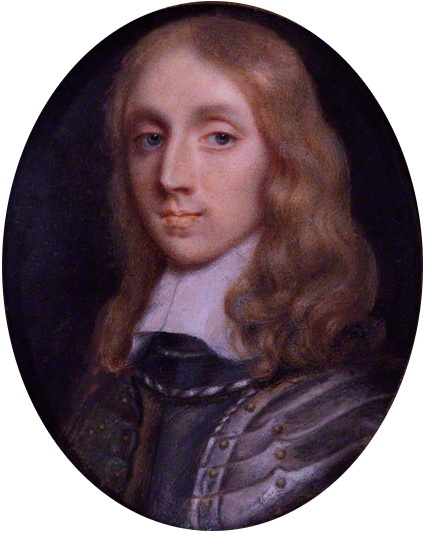 Following the death of his father Oliver on 3rd October 1658, Richard Cromwell became Lord Protector of the Commonwealth of England, Scotland and Ireland. There was no mechanism for succession to the position of Lord Protector under the constitution, so Richard Cromwell's appointment was a subject of controversy, not least from the military. The grandees of the army, which was instrumental in keeping Oliver Cromwell in power, were wary of Richard because he had no experience as a commander in the field of battle.
Following the death of his father Oliver on 3rd October 1658, Richard Cromwell became Lord Protector of the Commonwealth of England, Scotland and Ireland. There was no mechanism for succession to the position of Lord Protector under the constitution, so Richard Cromwell's appointment was a subject of controversy, not least from the military. The grandees of the army, which was instrumental in keeping Oliver Cromwell in power, were wary of Richard because he had no experience as a commander in the field of battle.
Apart from the suspicions of leading military officers, the other major problem facing Richard was a financial crisis. He decided to call a Parliament to find a resolution to the economic problems but due to his lack of influence on the election, the voters returned a majority of moderate candidates. Some MPs secretly wanted a restoration of the monarchy.
Parliament and army were soon at odds, with Cromwell in the middle. The army petitioned for increased taxation to ensure that soldiers were paid. Parliament responded by passing legislation that army officers could not assemble without permission of the Lord Protector. The affronted army officers demanded that Cromwell dissolver parliament. When he refused they sent troops to St. James's Palace (where Parliament met). Richard eventually relented, dismissed the Third Protectorate Parliament and recalled the Rump Parliament.
Richard's position had become untenable. He accepted parliamentary calls for his resignation on 25th May 1659 in return for the settlement of his debts and payment of a pension. The power vacuum that the resignation created resulted in the eventual restoration of the monarchy in 1660. That year Richard Cromwell left for France under the assumed name 'John Clarke'. His exile lasted for twenty years, after which he quietly returned to England. Initially, he lodged with a merchant in Finchley, Middlesex (now in London) and then moved to Cheshunt, Hertfordshire where he lived until his death in 1712.
David Plant's informative British Civil Wars site includes a biography of Richard Cromwell.
Customised search for historical information
25 May 2008
On this day in history: Richard Cromwell resigns as Lord Protector, 1659
Subscribe to:
Post Comments (Atom)















0 comments:
Post a Comment